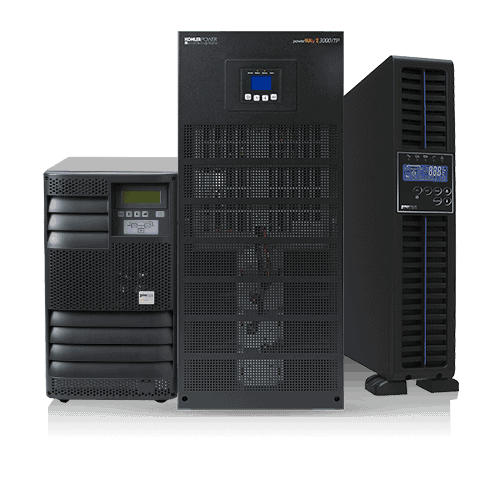Most people who use IT facilities at work – nowadays, a high proportion of the working population – will probably have some awareness of UPSs, and their well-understood battery back-up role. Additionally, some will appreciate that UPSs also filter the AC waveform during normal mains operation, ensuring no harmful transients reach the critical load.
However there is another issue that, though less well-recognised, can be equally harmful to a data centre’s IT equipment – and to nearby users’ hardware as well. This relates to harmonic pollution; a problem that has grown as the type of equipment that generates it has proliferated.
The problems of harmonics
Harmonics are created when equipment such as server switched mode power supplies, variable-speed drives, photocopiers and other office equipment draw current in pulses rather than as a smooth linear sinusoidal waveform. Ironically, UPS rectifiers are also significant culprits.
The distorted current comprises the 50 Hz fundamental plus harmonically-related higher frequency components. Since these components are out of phase with the line voltage, the products of voltage and current represent reactive Volt Amperes. The harmonic currents interact with the mains power source impedance to create line voltage distortion. Rectifier distortion also reduces the UPS’s input power factor, increases loading on the mains power circuits, and adds to electrical losses. Overloading can create excessive heat and possibly even fires, while harmonics can shorten equipment life expectancy.
One critical consequence, which must be addressed by any facility’s electrical system designers and installers, is that harmonic distortion is not limited to the UPS or data centre that created it. It can also propagate back through the utility supply lines to other users’ equipment, exposing it to the risks already described. In fact, the Energy Networks Association Engineering Recommendation (ER) G5/4-1 legislation exists to prevent such scenarios. This is an August 2005 revision and replacement of the Electrical Association Engineering Recommendation (ER) G5/4, published in February 2001.
By limiting the harmonic emission of customers’ non-linear loads, G5/4-1 helps to fulfil the technical objective of UK EMC regulations. These seek to limit the voltage distortion present in distribution networks to below the levels at which equipment function and performance are likely to be impaired. While harmonic distortion limits are not governed by statute, it is incumbent upon electrical designers and manufacturers to ensure emissions of equipment connected to the supply system do not exceed the planning levels set by G5/4-1, and that harmonic distortion levels are acceptable to the network operating company.
Solutions
The first step to reducing UPS-generated harmonic distortion is simply to ensure modern, transformerless UPSs are being used. A transformer-based UPS with a 6-pulse rectifier generates total harmonic distortion current (THDi) levels of around 30%. This can be reduced to around 10% by utilising a 12-pulse rectifier, and further reduced to around 5% by installing passive filtering.
However, a passive filter installation is not an inexpensive or trivial exercise, as the filter components must be inserted into the input power cabling, rated at mains voltage and able to carry the full UPS input current. Additionally, these filters can cause problems at light UPS loads, by presenting a leading rather than lagging power factor and possibly creating problems for generator alternators.
By contrast, latest-generation transformerless UPS systems employ active filters that continuously monitor and counteract the effects of unwanted harmonics generated by rectification. This can result in THDi levels below 2% at full load, and around 3.5% at 25% load.
Conclusion
The issue of harmonics has become increasingly important as non-linear loads have proliferated across organisations’ power networks. This issue must be contained, as a facility generating excessive harmonics can damage nearby users’ equipment as well as its own – a reality that is addressed by the Energy Networks Association Engineering Recommendation (ER) G5/4-1.
Although passive filters can mitigate the problem, the best solution is to use a modern transformerless UPS with active filtering.




